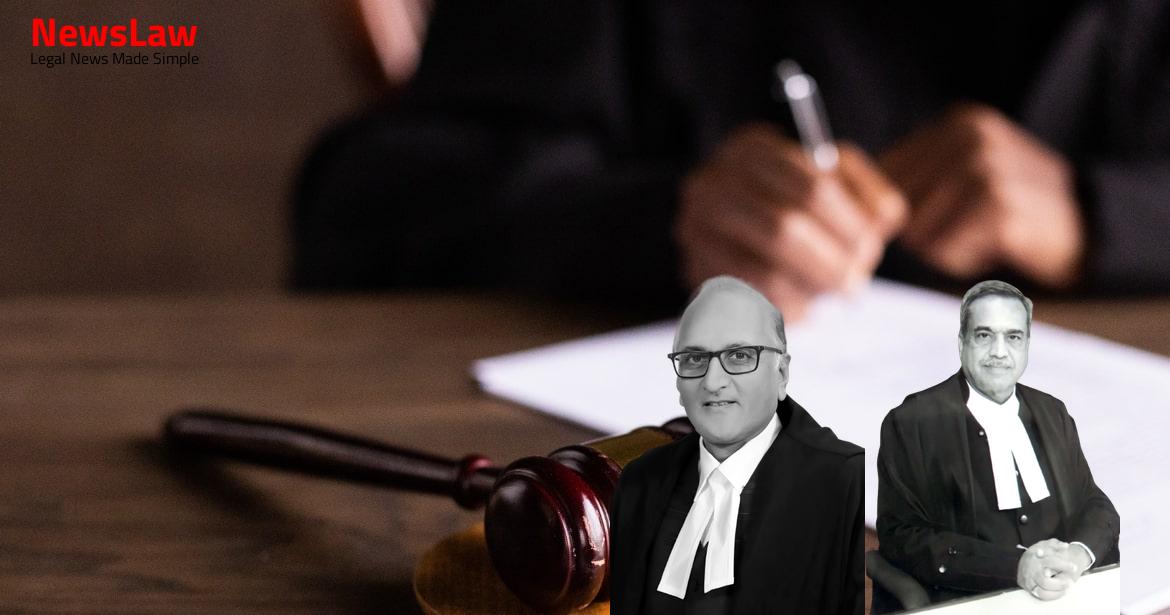In a significant legal ruling, the Supreme Court of India has pronounced its judgment in the Case of Unnatural Death in the Matrimonial Home. The case involved a homicide investigation where the prosecution established a prima facie case against the accused. The court’s decision sets a precedent in addressing criminal cases within the domestic sphere. Discover more about this groundbreaking judgment and its implications for legal justice.
Facts
- The police submitted a charge sheet under Section 306 and 498A, IPC after completing their investigation.
- The family received a telephone call about the daughter’s death on 14.10.1994 in the evening.
- No eyewitnesses were present, and the case relies solely on circumstantial evidence.
- The deceased was found by family members covered with a white sheet in the middle room of the house, discovered the next morning at 06.00 AM.
- The Sessions Judge added Section 302, IPC to the charges during the trial considering the nature of the evidence.
- The appellant, husband of the deceased, appeals his conviction under Section 302 of the Indian Penal Code.
- First information report, inquest report, and post mortem were completed on the same day of the incident.
- The deceased had been married to the appellant for approximately six to seven years.
- The Sessions Judge concluded that the charge under Section 302 was established as the deceased had been strangulated to death.
- In appeal, the High Court disagreed with this finding and opined that the deceased had actually been hanged to death.
Also Read: Dispensation with Personal Appearance in Criminal Case: Landmark Judgement by Supreme Court of India
Arguments
- The deceased died in unnatural circumstances inside the matrimonial home.
- The onus is on the prosecution to establish a prima facie case of a homicidal death.
- The courts have unanimously ruled that it was a homicidal death, not suicide.
- Counsel for the appellant argues that the deceased committed suicide.
- The appellant has been acquitted of the charge under Section 498A.
- Argument that it was impossible for the appellant to have forcibly hanged the deceased.
- Suggestion that the body was brought down from the noose after the suicide and laid on the ground.
- If the appellant had strangled the deceased, he could have concealed the body or cremated it.
- Death was homicidal in nature.
- Oral, physical, and medical evidence rules out the defense of suicide by the deceased.
- The circumstances in the case point towards the guilt of the appellant.
Also Read: The Jodha Ram vs. Kaushaliya Dispute: Supreme Court Judgement Summary
Analysis
- Presumption of fact allows inference of a fact from other proved facts.
- A judge’s duty in criminal trials is not just to prevent innocent convictions but also to ensure guilty individuals do not escape justice.
- The burden of proving a fact within one’s knowledge lies on that person as per Section 106 of the Evidence Act.
- Accused individuals cannot simply remain silent, expecting the burden of proof to solely rest on the prosecution.
- Failure of the accused to explain incriminating circumstances can be strong evidence of guilt.
- In cases of crimes committed within a home, the initial burden is on the prosecution, but the amount and nature of evidence needed are different from other cases of circumstantial evidence.
- Section 106 is designed for exceptional cases where the accused holds specific knowledge that the prosecution cannot easily establish.
- The court may draw inferences based on facts and circumstances of the case when certain exceptional scenarios arise.
- Section 106 of the Evidence Act is not to relieve the prosecution of proving guilt beyond reasonable doubt but to address situations where the accused possess vital, unprovable knowledge.
- Vivian Bose, J. emphasized the exceptional nature of cases where Section 106 is invoked.
- The injuries on the deceased indicate a struggle took place before death.
- The deceased lived with the appellant and their child, and there were strained relations.
- Evidence points towards a homicidal death in the marital home.
- No evidence of an intruder in the house at the time of death.
- Appellant’s conduct post the incident raises suspicions.
- The deceased was found in a position inconsistent with suicide.
- Prosecution established the presence of cow dung on the deceased, indicating she was performing household chores when attacked.
- Wooden log height in the room ruled out suicide as a possibility.
- Sessions Court’s view of strangulation aligns with evidence better than suicide theory.
- Prosecution has clearly established a prima facie case against the appellant.
- The precedents cited on behalf of the appellant are not considered relevant in the present case.
- Appellant’s failure to offer any explanation raises doubts about his involvement in the crime.
- Appellant was obligated to provide an explanation under Section 313, Cr.P.C. once a prima facie case was established.
- Appellant did not provide any explanation regarding the circumstances of the deceased’s unnatural death inside the house.
Also Read: Contractor vs. FCI: Determination of Profit and Wage Dispute
Decision
- The appellant’s bail bonds are cancelled.
- He is directed to surrender within two weeks to serve out his remaining sentence.
- The appeal has been dismissed for lacking merit.
Case Title: KALU @ LAXMINARAYAN Vs. THE STATE OF MADHYA PRADESH HOME DEPARTMENT SECRETARY
Case Number: Crl.A. No.-001677-001677 / 2010



